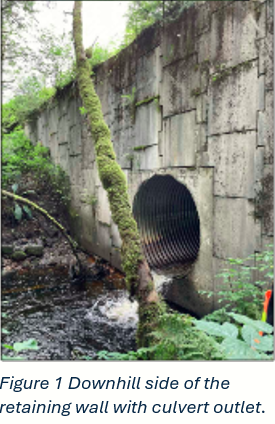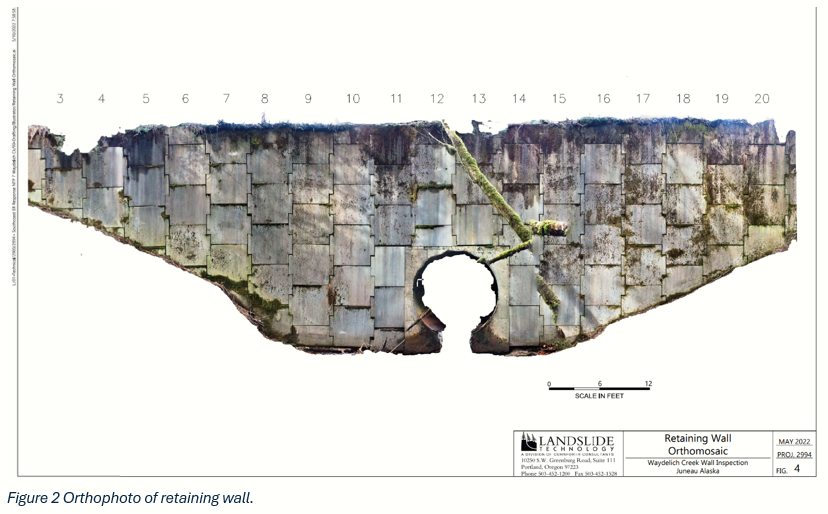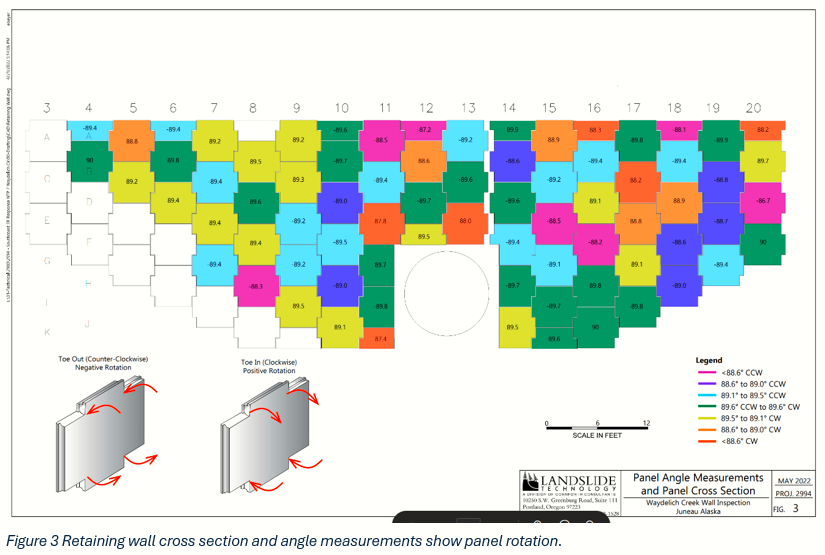Waydelich Creek
 Construction will occur this summer on repairs to the retaining wall at Waydelich Creek on Glacier Highway near Auke Bay in Juneau. The December 2020 storm caused damage in an area that DOT&PF was already monitoring.
Construction will occur this summer on repairs to the retaining wall at Waydelich Creek on Glacier Highway near Auke Bay in Juneau. The December 2020 storm caused damage in an area that DOT&PF was already monitoring.
Down below the road, the project will fix the base of the retaining wall by strengthening wall panels and repairing damaged fill within the wall. The repairs will fix scour and erosion at the culvert inlet and outlet. At the roadway, the project will repair curbs, gutters, and guardrails and install drainage control.
The Waydelich Creek repair project went to bid in winter 2025. A contractor has been selected and has begun work. Construction will occur this summer and is expected to last roughly two months.
Contractor crews will access repair locations from both the north side of the creek and the road's edge. Construction will start at the bottom of the wall below the road and continue activity to the top of the wall. Once retaining wall repairs are complete, crews will dig out embankment above the wall and replace it with a new paved shoulder, guardrail, and improved drainage.
Traffic impacts are not expected due to this project because most of the construction will occur off the road at the bottom of the retaining wall. See the graphic below for overall plans.

Plan Link 
Unique Design Required
Built in 1980 when Glacier Highway was extended from Auke Bay to Haines, the highway crossing over Waydelich Creek consists of a culverted creek running through embankment which is stabilized on the downstream (ocean) side of the highway with a 27-foot-tall retaining wall. This wall is made up of interlocking concrete panels (see Figure 2). Over the years, water intrusion into the embankment and settling fill created voids or excess pressure behind some panel sections. DOT&PF has been monitoring and maintaining the wall for years.
After the November 2020 storm, field inspection found that water damage has impacted the retaining wall. Some of the panels in the retaining wall have begun to bulge (see Figure 3) or have started to diverge from the planned gap between panels, and the culvert inlet and outlet showed scour. While the road is stable and panel movement will be arrested well before the wall becomes structurally deficient, site repairs are expected to restore the wall’s expected service life near to the 75-year assumed highway design life.
The field work needed to inform the project design presented interesting challenges. To understand wall condition, the design team took 3D front scans of the wall facing panels and overhead LiDAR drone imagery to monitor movement over 3 seasons. The design team could only access the vertical sections of the wall below active traffic on the highway above by rope, and they could only access the wall base and the culvert by working in Weydelich Creek at the foot of the wall.
Based on this investigation, designs were developed to reduce water intrusion, stabilize the wall, and rehabilitate the culvert inlet and outlet. At the top of the wall, repairs will control surface water run-off and prevent water from funneling towards the wall’s face. Phased grout injection in the wall will fill voids behind the panels to strengthen the wall. Repairs at the base will rehabilitate the water exit and drop off into the creek to prevent further scour and wall panel movement.

